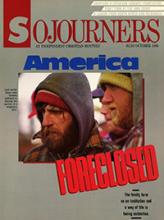Ours is an age of great material progress--an era of technology. Never has the human race enjoyed such an abundance of wealth, resources, and economic power. Yet a huge proportion of the world's citizens are still tormented by hunger and poverty, while countless numbers suffer from total illiteracy.
Why has social progress lagged behind the sweeping advances of technology? The answer lies in our moral values. Morally and ethically, our treatment of the land--and I include earth, water, and air--is scandalous, unethical, sinful, and tragic.
We cannot separate technology from moral values. To reject moral values is to attempt to build a society that is alien to God. The alternative is to set up false gods, which can only destroy the religious liberty and the material well-being of the citizens.
Our values will ultimately determine how we respect and treat the land. If land is just a commodity, we will abuse it in our greed to make a profit. If land is just a means to make money, then we will lose sight of its ultimate purpose. But if land is a gift from God, then we will give that land the dignity and the sacredness that God has given it.
Our economic system has little respect for land as a God-given resource. We seldom think that land must serve the needs of all God's people, not just a few. Why are there countless millions who do not have enough to eat? Why are there so many poor and dispossessed people in our world? Thirty-five million Americans fall below the poverty line, and the statistics are even worse in the Third World.
At the heart of this debate is the land. Who owns the land? Do we use it for the few, or is it for all people everywhere? Every piece of land carries with it a mortgage for the social needs of others.
Read the Full Article

